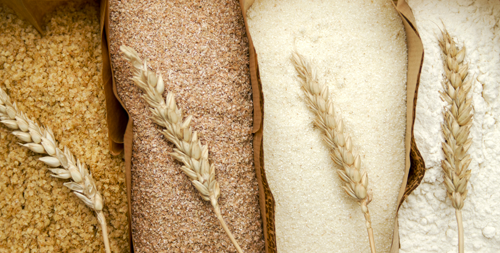Common
Sensitivities
Whilst it is possible for the body to develop a sensitivity or intolerance to any food or drink item there are certainly those, which are very common.

Common sensitivities

Gluten
Gluten is the name given to a protein found in all wheat, rye, barley and oat products. It acts like a binder in food, giving it elasticity and a springy feel. It is found in all produce which uses wheat, rye, barley or oats such as bread and bread products, pasta, biscuits, crackers, cereal, muesli, cakes and pastries. It can also be found in beer, ale, lager, soups and processed products.

Wheat
Wheat is found in items using wheat flour or the wheat grain itself such as bread and bread products, pasta, biscuits, crackers, cereal, cakes and pastry products. It is also often used as a thickener so can be found in soups, sauces, stews and processed meals. It can also be found in beer, ale and lager.

Dairy
Dairy products are those, which are produced from or contain milk from animals. Most commonly cow’s milk is used, but goat and sheep’s milk can also be used. Dairy products include milk, butter, cheese, yogurt, cream, sour cream, custard and ice cream. Milk can also be used as an ingredient in desserts, sauces, soups and processed products.

Eggs
Eggs are the produce of chickens and ducks. Most commonly it is chicken eggs, which are sold and used in processed products. Eggs can come in many forms, boiled, poached, fried, scrambled and omelette. They are also used in baking, mayonnaise, custard, mousse, margarine, meringue and ice cream. Eggs can be separated into egg white and egg yolk, sometimes only part of the egg is used.

Yeast
Yeast is a fungus, which feeds on sugars. It is used in the baking of products like bread. It may also be found in pastries, biscuits, crackers, cereals, stock cubes and alcohol, such as beer and cider.

Sugar
Whilst there are a number of different types of sugar, the most commonly used in homes and in the manufacturing of pre-packaged foods is table sugar or granulated sugar. Granulated sugar is often used in the home as a sweetener in beverages such as coffee or tea, on cereals, or as an ingredient in baking or cooking. It is used extensively in the production of processed food and drink as a sweetener and a preservative; fizzy drinks, cordial, sweets, chocolate, bread, baked goods, cereal, muesli, granola, flavoured yogurt, flavoured milk, low-fat products, sauces, salad dressing, soups and processed meals.
Find a test that’s right for you
Other Sensitivities and Intolerances
Whilst commonly food sensitivity or intolerance is thought of as one condition, there are actually a number of different types stemming from different causes. There are those, like lactose intolerance, which are caused by the lack of a certain enzyme. Genetic factors are thought to play a role in non-celiac gluten sensitivity. Whilst the inability to effectively break down and absorb a food, like carbohydrate malabsorption, is another type of intolerance.
Hair testing has the ability to tell us valuable information about items that the body may be sensitive or intolerant to, which would otherwise be unknown to us. But every test has its limitations and we feel it is important our customers understand which types of food sensitivity or intolerance hair testing is not suitable for.

Lactose Intolerance
Lactose is the sugar, which naturally occurs in milk products. Lactose intolerance is caused by a lack of the enzyme lactase. It means that the body is unable to break down, digest and absorb lactose. It causes symptoms such as cramps, bloating, diarrhea and sometimes vomiting. In order to test for this intolerance a breath test is required.

Non-Celiac Gluten Sensitivity (NCGS)
Just like celiac disease symptoms occur in non-celiac gluten sensitivity after eating gluten. The symptoms it provokes are very similar to those of coeliac disease; bloating, cramping, stomach pain, diarrhea, constipation and fatigue, only the body does not attack its own intestinal wall. This condition is very hard to identify as there isn’t a test for it. The best method for understanding the presence of the condition is generally through keeping a food and symptom diary.
Complementary Alternative Medicine (CAMS)
Our food sensitivity tests are carried out using bioresonance therapy and is categorised under Complementary and Alternative Medicines (CAMs) which covers a wide range of therapies that fall outside mainstream medicine. Tests and related information provided do not make a medical diagnosis nor is it intended to be a substitute for professional medical advice, diagnosis or treatment.
Always seek the advice of your doctor or other qualified health provider if you have a medical condition or with any questions you may have regarding a medical condition and/or medical symptoms.
Order your test
We believe that in providing you with your test results and relevant information in each section, your results can form the beginning of a journey, enabling you to make positive changes to your daily diet and environment.



















